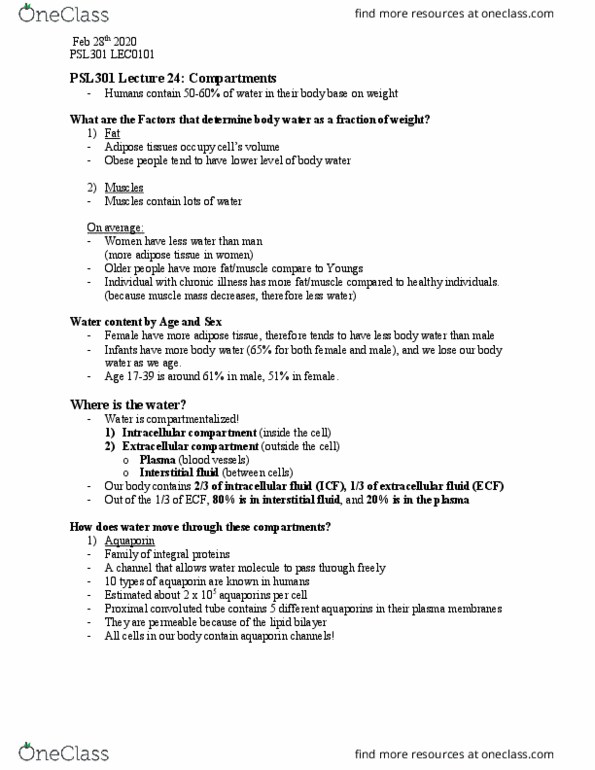PSL301H1 Lecture Notes - Lecture 23: Brainstem, Cardiac Arrhythmia, Vagus Nerve
PSL301H1 verified notes
23/38View all
Document Summary
French physiologist jean-charles legallois noticed that after a person"s decapitation, the individual was still showing breathing movements in their mouths. Once tumor is removed, breathing went back to. This image shows a patient with a tumor around its brain stem breathing patterns normal. 2 different types of activity in inspiration expiration: inspiration, expiration. Inspiratory muscles: diaphragm muscle, upper air way muscles (genioglossus muscle in tongue, to allow air flow, scalene. Phrenic and spina nerves: phrenic nerve, hypoglossal nerve, cervical nerve. Inspiratory muscles are not activated, then breathing collapse. Measures the number of apnea (sudden stop breathing) and hypopnea (low activity in breathing) episodes per hour. ~5% of the general population have apnea. Long term might result in stroke, cardiovascular disease (e. g. hypertension) Continuous positive airway pressure (cpap) machine during the night. Able to deliver constant air pressure to your airways.




